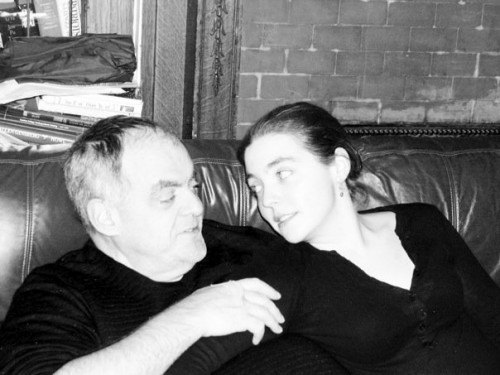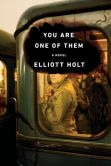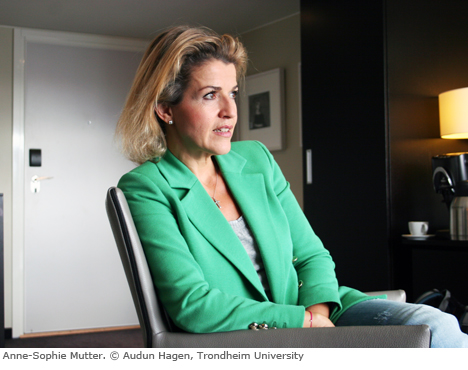Jasmina Tacheva Talks with Thomas C. Joyce, Adjunct Professor of English at Canisius College, Buffalo, New York
11/16/2011

Tom Joyce with his daughter, Gilbert. Photo courtesy of Fiona Joyce.
What do you think literature is and why do we need it in our Hi-Tech, multi-fast, mega-dynamic society?
I will answer in reverse order, because I think why we need literature is part of the definition. We humans live with noise. Mostly we live with habitual noise, but if we are lucky we live with the joyful noise the Bible celebrates. In our fast-paced world, we live with so much noise that we do need a place to rest, a place where experience winnows down and where we become reflective.
Many people misconstrue noise for passion and noise for living an active life. Some of the best web sites I know are over-stimulated mélange of great images that attack the reader at such depth and speed that the watcher becomes even more passive. In the face of a million stimulations at once, the human mind shuts down and shuts out.
Enter Literature, with its great heart for engaging and understanding and meditating over and accepting the world as it is. We need to know what it is that we are giving back when we die.
Literature, which I will define here in an attempt to define, slows down experience to an engageable unit.
Literature is the representation in words of passions, stories, sounds, experiences, and mysteries for the enjoyment, enlightenment, mystification of and challenge to a reader or readers.
As a professor of English of long standing, you reject the traditional notion of teaching as a disengaged teacher’s monologue and initiate a real dialogue between you the students, and among the students themselves. What is the product of these discussions?
The product of these discussions I feel is to encourage students to break down the wall they feel has been constructed between them and a life of meaning and significance. Students are often both convinced of their own uniqueness and ashamed of being.
Often, a general question about meaning or life will be answered by a cliché reaction, which is simply false in every way. Ask them “Who has more power in relationships, men or women?” and the first response will be, “It is different for everybody.” They say this even though retailers can know by their zip code and age and sex what products they will buy and when.
But if we stay with a question about men and women, which students really express as guys and girls, and we will uncover an enormous amount of anti-girl sentiment. While the students maintain, “everyone is different”, the girls will readily pronounce, “girls are mean.” It seems clear that if girls believe that girls are mean, then the girls will not have the kind of solidarity from which power arises.
I think that the first thought, that everyone is different and therefore unique, is undermined by the second thought that girls as a class are mean. But more than whatever the discussion reveals about contradictions on any particular point, what the discussion reveals is that people pay lip service to individuality while embracing stereotypes and the off shoot of this is a feeling of being overwhelmed and small.
The student feels s/he has nothing to say, so s/he hides behind the collective idiom that “everyone is different”. Of course, there are other problems with this thought, for example, it makes people non-judgmental even where they are caught in a place where they have to make a judgment, so the thought leads to passivity, particularly about political events which really define their hopes and dreams, but which they feel lost to understand and so they rely on the, some people are into politics and that is fine for them, but I don’t care because the political stuff isn’t interesting and doesn’t really effect me (maintaining this, even as they climb into monstrous debt from student loans, even as they have no health insurance, even as the gap in entry level wages for them compared to previous generations is staggeringly set against them).
I think our conversations open the students up to the world in the classroom, and that such opening up is what Literature itself does. (I never know when to capitalize Literature, so I apologize for inconsistent use of L and l in referring to it.) Students are shocked to discover that others have problems and joys and passions, and I think novels and poems and short stories and songs, too, are unique in their ability to empower a person to find his or her identity.
I do not think it is too much to say that Literature as a category leads to the development of a concept of a soul (as do philosophy and religion and some other studies), and then through the experience of the lines, images, situations, stories, expressions, etc. of the works and how those works impact on the emotion of the reader, to the creation or realization of what one’s soul looks like or would look like.
If we imagine literature as a house that is constantly being built on, what is its building block?
Ah! This is such a fun interview with so many ideas rushing into my head, but this question is really great.
The building blocks are words and clusters of words, but there is so much more to it. In one of the essays I received this semester, a student wrote, being true to his generation, that music is different for everyone. That is really untrue. Not everyone responds in the same manner, but music can be described accurately as ‘sad’, ‘uplifting’, ‘regal’, ‘exciting’, etc. Music theory can describe what makes sounds have certain emotions.
The emotional power of words is similar to the emotion power of musical notes. Clusters of words function like clusters of sounds. The writer must find the words to evoke in the reader the emotions and passions that s/he is building in her/his writing. One of the sad things about the study of Literature today is that we do not have enough time to adequately address the emotions that the cluster of words and individual words themselves make. Ironically, students are too burned out after being taught “close reading” in lower grades and especially High Schools.

Tom Joyce with his wife, Linda. Photo courtesy of Fiona Joyce.
Teachers rightly pay close attention to the mechanics and workings of passages, but somehow in their insistence that the students see the “deeper meanings” of things, the teachers often convince the students that reading is NOT something that they can do alone. The student will miss too much of the real significance if they just read books and poetry on their own. That is not the message that teachers think they are giving, but way too often that is the message the student hears.
As an aside, I need to explain that English teachers in High School have over a hundred students and they have tasks and measures that they have to hit, The teachers have to teach students to write certain formulaic things for the essay tests that will be graded by other teachers who will read hundreds of essays and have rubrics that demand a certain conformity of thought and style. Teachers do not have time to allow students to be wrong, and since all true reading is in part a misreading, the students often do not learn to love reading and writing, they learn how to form thesis driven five paragraph essays in which they pay homage to the deeper meanings of things, all the while ignoring the mystery and the pleasure which reside both on the surface and especially within the inner layers and suggestions and hints and complexities’ of literature.
A poet and writer named Sandy Dedo has talked to me often of a theory she has about literature that turns on the mystery that abides within some works even after you know them well. That kind of engagement with literature is perhaps beyond high school students, but they are actively discouraged by the current system of teaching conformity to the rubrics upon which the student’s reading and writing will be rigidly graded.
Is it appropriate to talk about a unified body of literature that permeates the entire world, or is it better to think of literature as an ensemble of the literatures of various countries and cultures? How does literature differ from nation to nation; from century to century?
This is another great question that is almost too big to answer. I think it would be wonderful if we could construct a Canon, which included the best writing from every country, but such a canon would be immense.
I will eventually sketch an answer to the question of how literature differs from nation to nation and from century to century, but for now, I will write a short hand answer that will be more attempt than actuality.
I was lucky enough to go to school when American schools still taught Latin. The greatest thing about Latin was the works we read, especially Catullus and The Aeneid. My teachers, Fr, Conroy, S. J. and then Fr. Roslivich, S. J. were both impassioned teachers who believed that 16, 17, and 18 year old boys had a soul that would respond to poetry, and they were right. I remember Dido’s suicide and funeral, and I remember how modern Catullus seemed with his complaints about the evanescence of romantic, and for Catullus even sexual love. And I remember Catullus’s elegy for his brother, ‘ave atque vale’, and I remember his ‘Odi et amo’ and the fun of translating, I love and I hate, why do I do these things perhaps you ask. I do not know, but I do love sometimes and hate sometimes and life brings me excruciating pain from my passion.
That is a free translation with too many words, and that is the thing we need to understand about bringing life from another era into our life. It might be that we understand the poem perfectly, but it is also possible that the writer and his audience all those years ago would say, no, that is not even close to what we felt.
So there is a certain imperialist impulse even behind the good intention of learning from and respecting writers of another day or place. We need to be humble and realize we are getting a misreading, even of we do our best. But I agree with Harold Bloom that all reading is an action and always in a real sense a misreading, he calls it misprision, and so we should go ahead and try to engage writing from every corner and time of the Earth.
For Sartre, the literary work exists only through the collaboration of writer and reader: “Creation can find its fulfillment only in reading, since the artist must entrust to another the job of carrying out what he has begun.” Do you agree with this statement?
Yes, I do emphatically! I have had the great pleasure of reading an anthology of Bulgarian writers in translation. One poem in particular speaks to my soul, and I read it every day. The poem, by Binyo Ivanov is translated: “The wind is coming, and I love you,/dawn lifts an arm, the sunset fades,/a cloud is drying, and I love you.” The poem immediately struck me and raised so many passions inside me, and yet I knew from the lines about the “Balkan mountain bears he stalked” and the mention of an “eternal war with vermin” complete with a footnote informing a western reader that vermin also means “pagans” in Bulgarian, that the poem had dimensions which only study would bring me.
As I said in answer four above, all reading is a form of misreading and once an author writes something and gets it out there, s/he does lose control of how it will be experienced. It is not quite that case that the work will be “different for everyone”, but the work will change meaning over time and will strike some people with great passion and will barely stop long enough to even linger with another reader. What Sartre probably had in mind was an active audience of left wing philosophy savvy thinkers who would embrace his ideas and make his ideas their own and then perceive other readings through the lens he wanted to impose on the world, but what has happened is that we have seen that the readers see things in the text that the author did not consciously realize were there.
We make the text our own in some ways, if the author is lucky. Like language itself, which has to change over time in order to escape being a dying or dead language, so too texts must somehow change to attract new readers. The Italian philosopher and thinker Giorgio Agamben wrote that every generation produces a new reading of Dante and his Divine Comedy. This idea may offend purists, but it seems to me that the great works do last for a long time because when new readers come to them they recreate the work in the image of their own time.
Hail and farewell brother Catullus, you touched me when I was 17 and now that I am an older and completely different man, you still touch me, you still offer me a silent place to discover who I am, you still carry the mystery of a great work in your lines, whether translated or read aloud in the original. That is what we mean when we say we collaborate to create the text, and I would say the author is the most important part of that collaboration. But I get ahead of myself, and that is for another conversation.

























